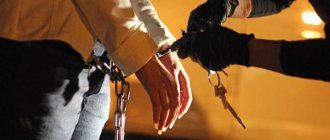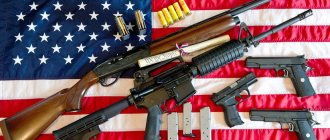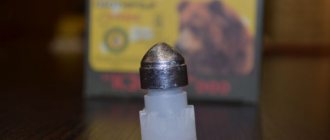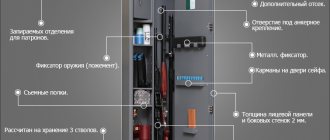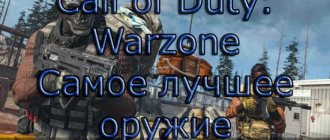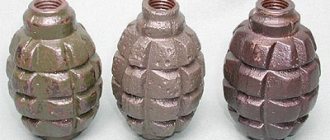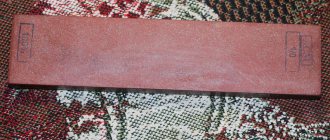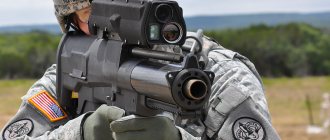Every person who decides to purchase self-defense equipment that falls under the definition of a traumatic weapon should know the rules for storing a traumatic pistol at home. The main source of information on this issue is the Legislation of the Russian Federation.
Storage rules for a traumatic pistol are regulated by Decree No. 814 of July 21, 1998 on measures to regulate the circulation of civilian and service weapons and ammunition, specifically paragraph 59 states the following.
"59. Weapons and ammunition belonging to citizens of the Russian Federation must be stored at the place of their residence in compliance with conditions that ensure their safety, security of storage and exclude access to them by unauthorized persons, in locked safes or metal cabinets , boxes made of high-strength materials or in wooden boxes, upholstered iron. Internal affairs bodies at the place of residence of the owners have the right to check the storage conditions of weapons registered by them.”
This means that the requirements for storing traumatic weapons are the same as the requirements for storing firearms. And you need to purchase a metal box with a lock, which, if necessary, you will have to provide to local internal affairs authorities to check storage conditions.
What is the difference between a traumatic pistol and a combat pistol?
The main purpose of civilian weapons is to ensure the safety of life and health from criminal attacks by criminals.
But as often happens, it is quite difficult to exercise the right to self-defense with a gas canister or a stun gun. It’s a different matter when you have a weapon, but what kind of weapon is better to have - combat or traumatic and what is the right thing to do so that protecting life in a conflict situation does not result in an accusation of excess authority or unlawful use of weapons.
What is a traumatic pistol
In the general classification of firearms, traumatic weapons are a special type that is subject to strict safety requirements. In Russian legislation, this type of weapon is combined under the concept of firearms with limited destruction. It includes the weapon itself and special ammunition.
Pistols and revolvers with traumatic action may be similar to real combat pistols and revolvers, or they may be made in the form of designs and shapes that do not fit into the usual idea of pistols and revolvers.
A special feature of this type is the design changes in the design of the combat model, in which it loses its combat properties and which, after such changes, cannot be used for firing ammunition with a metal bullet.
Simply put, it is impossible to fire a live cartridge from such a pistol, but it is quite possible to fire a traumatic one. The alteration concerns, first of all, the barrel bore, the return spring, and the mechanism that allows you to fire bursts.
A traumatic pistol uses cartridges that do not match the combat ones in size, and the barrel itself has deformations that, when fired by a rubber bullet, deform it too, thereby reducing the bullet’s flight range to 15-20 meters, while the effective firing range of combat pistol range is 25-50 meters.
Legislation regulating the right to acquire, store, carry and use firearms consists of federal laws and regulations of the government, internal affairs bodies, and the National Guard. The legislative system includes the federal law on weapons of 2011, instructions on the procedure for obtaining permits to purchase, carry and store traumatic weapons.
According to the law, a pistol or revolver is intended for mechanical destruction of targets with traumatic cartridges, gas cartridges or flash-noise cartridges. The main condition in this case is not fatal defeat, but infliction of injury or, at most, mutilation in order to stop the attack and protect life and health.
Legislation has found a universal formula for classifying weapons of limited destruction. For this purpose, the muzzle energy parameter created by a shot of ammunition with a rubber bullet is used. For different types of traumatic weapons it can be:
- For a civil one, or in other words, permitted for purchase by citizens over the age of 21, it is a maximum of 91 J.
- For service or one that is in service with government law enforcement agencies and private security forces, the maximum energy is 150 J.
- For civilians - the maximum number of cartridges in the drum is 10 pieces;
- For service personnel, the amount of ammunition is unlimited;
- When carried, civilian weapons have a number of restrictions - you cannot carry them with a cartridge in the chamber, you cannot be in public places, you cannot have a weapon with you while intoxicated;
- For purchase per person, no more than 2 units of traumatic weapons are allowed (the only exceptions are collectors)
In technical terms, the differences between traumatic firearms and combat weapons can be divided into several key points.
- The first concerns weapons converted from combat weapons, here the differences will be in the form of some parts of the design changed or replaced with others with lower tactical and technical characteristics. Here the comparison will be more correct and clearer.
- The second point concerns traumatic weapons, which were originally designed as weapons of limited use. It would not be entirely correct to compare combat samples and purebred injuries here, although this can be done for clarity.
- The third aspect concerns special devices for shooting rubber bullets. Some of these devices are so unique that it would be simply incorrect to compare them, for example, “Osa” or “Guardian” - these devices do not have a barrel, and in the classical sense of a pistol they simply do not fit, but at the same time they can compete in such categories as initial bullet flight speed, effective fire range, stopping power of ammunition.
For clarity, it is worth comparing the Makarov combat pistol and its “rubber-resistant” relative, the MP-79T. Both products have a frame made of weapons-grade steel. Both have an identical trigger and safety, and both have the same layout. But their trunks are completely different.
This is a combat PM, with the magazine disconnected, the bolt carrier with the bolt and safety and the return spring removed. Here it is worth paying attention to the shape of the barrel - it is flat with reinforcement in the breech at the chamber.
This is an incomplete disassembly of the MP-79 T, moreover, manufactured on the basis of a combat PM. Everything is the same, except for the barrel; on its side you can see a notch made by a milling machine.
And here is a section of the trunk. The first thing that catches your eye is the two wave-like swells that narrow the inner diameter of the barrel, the second difference is the narrowing in the muzzle.
These obstacles do not allow the rubber bullet to pass freely through the barrel, which significantly reduces the initial speed of the bullet.
But while a rubber bullet can deform, a bullet with a steel core cannot do this.
This is precisely the main difference between a traumatic pistol and a combat pistol.
comparison table
| Name | Makarov pistol (combat) | Makarov pistol traumatic MP-79T | Pistol Walter R 22T |
| Housing material | Weapon steel | Weapon steel | Aluminium alloy |
| Barrel material | Weapon steel | Weapon steel | Steel |
| Caliber | 9 mm | 9 mm | 10 mm |
| Barrel type | threaded | Smoothbore with two bulges, with reduced clearance in the muzzle, with external load reduction zones | Smoothbore with 2 pins |
| Initial bullet speed | 315 m/s | 300-310 m/s | 315 m/s |
| Muzzle energy | 300J | 30-70 J | 36 J |
| Ammo | 9x18 PM | 9 mm R.A. | 10x22T |
| Sighting range | Up to 50 meters | Up to 10 meters | Up to 10 meters |
| dimensions | 161x127x30.5 mm | 161x127x30.5 mm | 170x115x35 mm |
| weight | 0.73 kg | 0.63 kg | 0.6 kg |
As you can see, the traumatic pistol is inferior to the combat model both in weight and in the muzzle energy of the shot and in the range of the bullet.
How to buy a traumatic pistol legally
Today, by law, any citizen who has reached the age of 21 at the time of purchase can buy a traumatic pistol.
- To purchase a weapon, you must go through a number of mandatory procedures in order to prove to government agencies that the purchase of a traumatic pistol will not be accompanied by future problems with the law. First of all, this concerns mental health. To do this, it is necessary to submit a standard certificate to the licensing authorities stating that there are no contraindications to the right to own a weapon. A certificate is obtained from a psychoneurological clinic or from a district psychiatrist at the place of registration.
- The second point is to provide documents confirming that the applicant does not have problems with drug use. To do this, you will have to not only obtain a certificate from the drug treatment clinic at your place of residence, but also pass a test to ensure that there are no traces of narcotic or psychotropic substances in your body.
- In addition, it is necessary to have a place of permanent registration. Without this, weapons simply will not be sold. And provide a document stating that there is no criminal record or they have all been expunged. In addition, you will have to order a certificate stating that all fines for the last six months have been paid, but in order for the matter to move forward and permission to be obtained as soon as possible, it is desirable that there were no fines at all for the last six months.
- After receiving all the primary documents, you must pay the state fee for the right to purchase traumatic weapons.
- The next step is submitting documents and photographs to the licensing authorities of the Russian Guard. In parallel with this, it is necessary to prepare a place for storing weapons. After submitting the documents, usually within 3-5 days a local police officer will arrive at the registration address to inspect the place where the weapon is stored and draw up a report. The purpose of his visit is to make sure that everything is ready for the normal storage of weapons.
- In addition, before purchasing, it will be necessary to take courses in handling weapons. The courses are paid, so you will have to fork out some money, there are not many classes, but based on the results, you will be issued a certificate of completion of the training course and passing the exam.
- After completing the entire list of preparatory activities, the permitting system will issue a permit for the right to purchase a traumatic weapon, which will be valid for 6 months. If the pistol is not purchased during this period, everything will have to be repeated from the very beginning.
- After the weapon is registered in the store, within 10 days it must be registered in the licensing system and obtain permission to carry it. By the way, this right will be valid for 5 years, after which it must be extended with the obligatory completion of the entire chain of obtaining certificates, certificates and inspections of the safe by the district police officer.
How to buy a combat pistol legally
Alas, today the state does not allow it to be legal to buy and keep a combat pistol at home.
A rifle, carbine, or even a Kalashnikov assault rifle converted into an automatic carbine is possible, but a short-barreled rifled weapon in the form of a revolver or pistol is not allowed.
Of course, there are exceptions, in the form of award-winning or antique weapons, but this is too long a path. Alternatively, many become members of sports sections and clubs, but even in this case, the purchased weapons will not be stored at home, but in the weapons room under lock and key in the sports club.
And in this case, the transportation of weapons has big problems in terms of coordinating the route, checking the conditions of transportation and storage. Alas, the state is not yet interested in ensuring that citizens can ensure their own security and exercise their constitutional right to personal security.
Source: https://pnevmatiky.ru/travmatika/chem-travmat-otlichaetsya-ot-ognestrela
TOP 3 most powerful traumatic pistols
Several years ago, important amendments appeared in our legislation regulating the circulation of traumatic weapons. These amendments prohibited the import into the territory of the Russian Federation of even certified weapons of limited destruction of imported production.
Now all LLCs sold in stores must be domestically produced. This created a certain vacuum in the market. Naturally, no one warned the manufacturers in advance about this decision. Manufacturers were unable to immediately adapt to the new law.
The way out of this situation was the deployment of production on the territory of the Russian Federation. Naturally, if we are talking about the production of imported weapons, then the share of participation in the production of domestic manufacturers is minimal.
But such a solution makes it possible to put the “Made in Russia” nameplate on the weapon and overcome the new amendments.
We present to your attention a selection of the most powerful traumatic pistols produced in Russia from imported components.
The Grand Power T12 pistol takes honorable third place in the ranking. It has been present on the domestic market for several years. Fans remember it back when it was produced in Slovakia. It was later replaced by a Russian-made version.
Grand Power T12
This is a very powerful and reliable pistol in 10x28 caliber. Comparative tests show simply wonderful results.
Despite the fact that, according to documents, it produces the regulated 91 J with a standard cartridge, it easily outperforms domestic competitors in terms of penetration. I remember the test for breaking through a stack of paper.
If all other competitors in caliber 9 RA punch 250 sheets (plus or minus), then the Grand Power T12 punches 450. What 91 J are we talking about?
The pistol is quite large and weighty. Its weight is 770 grams without cartridges. True, given its dimensions, it is not entirely suitable for everyday wear, but it performs its function perfectly. The price for 2020 is 38-45 thousand rubles, although once it was above 50 thousand. Competition with new products is taking its toll.
Second place can be safely given to the Sig Sauer P226T TK pistol in the same caliber 10 x 28. This is a well-known pistol, used all over the world since 1983. Now we can see (and not only) its traumatic version, produced in Russia.
It is produced by Techkrim. More precisely, this company produces barrels for it. Everything else is imported into the Russian Federation in finished form. So the buyer gets an almost authentic Sig Sauer for his money, but with amendments to our legislation.
Sig Sauer P226T TKSig Sauer P226T TK
This pistol also does not belong to the compact class. Its weight is more than 800 grams, and its dimensions force you to carefully choose the form of clothing for concealed carry. The cost today is approximately 50-60 thousand rubles. The low level of localization in production and the exchange rate multiplied by sanctions have an impact.
Well, first place rightfully goes to the TK1911T pistol of 44TK caliber. This is the same Colt that took its honorable place in the world history of weapons production. It is absolutely authentic to its combat counterpart.
They say that it is made from Chinese components from Norinco.
It is impossible to say anything specifically about reliability and service life, but the fact that Norinco is one of the suppliers to the Chinese army should at least give us hope for quality.
We must pay tribute to the Tekhkrim company that produces it. The pistol is available in a very wide range of different versions. Available:
TK1911T black oxidized. Photo from the site https://techcrim.ruTK1911T silver. Photo from the site https://techcrim.ru TK1911T green olive. Photo from the site https://techcrim.ru TK1911T version “Legend”. Photo from the site https://techcrim.ru
The latest version is the same black Colt, but with wood grips. With them, it takes on a completely different, more “rich” look.
It should be noted that the same caliber 10 x 28 should be used. A new caliber 44TK was developed especially for it. As the manufacturer assures, this is an even more serious caliber than 10 x 28. Where did 91 J go? And its highlight is the fact that the sleeve is made from a 7.62 x 39 sleeve.
Cartridge 44TK. Photo from the site https://techcrim.ru
It is striking that the mass of the projectile in this cartridge is only 1.3 g. The question arises: what is the initial velocity? There is quite a bit of information about it so far, but there is hope that the domestic market has received another very interesting example of an LLC.
Thank you for your attention, I hope it was interesting. Shoot safely.
Like, subscribe to the channel, write comments. It is very important for me.
I recommend reading other articles on the topic:
LLC Ratnik - a revolver that fires rifle cartridges
Source: https://zen.yandex.ru/media/id/5d14994321f51b00aea1c32e/5d516f78bd639600ad867096
What is a traumatic pistol, how does it differ from a combat pistol?
The types of civilian weapons are strictly defined by federal law. Firearms of limited destruction are listed as one of the categories. This definition is quite general.
Note that this includes a group that is more familiar to us – traumatic weapons. Citizens who have gone through the licensing procedure in the licensing department are well versed in the types of civilian weapons, while for others, trauma raises a lot of questions.
First of all, these questions are related to the definition of the group as a whole.
Despite the fact that Russian law prohibits the free circulation of weapons, the crime rate is quite high. Hence the desire of citizens to protect themselves. A traumatic pistol is an excellent means of self-defense.
Before you become the owner of even a non-lethal weapon, you should clearly understand its capabilities, characteristics and scope of application. This is why general knowledge about self-defense will always be valuable.
The potential owner must go through several stages.
- Get acquainted with the legislative framework.
- Decide on the type of weapon.
- Learn to use trauma.
- Go through the procedure for obtaining permits.
The mere fact of obtaining permits does not mean freedom of action. The storage, carrying and use of weapons are regulated by law. In terms of the method of handling, the traumatic weapon is similar to a real military weapon.
Definition of traumatic weapon
A traumatic pistol is one of the types of traumatic weapons, designed to ensure one’s own safety and operating at a relatively short distance. Pistols are short-barreled weapons and can be either smooth-bore or with a limiter in the barrel.
Smooth-bore traumatic guns are used by security forces or the military during some operations. Pistols with limiters are designed for rubber bullets. The limiter reduces the energy of the shot and also eliminates the possibility of using real live ammunition.
There is a limit on shot energy in the category; it should not exceed 91 J.
Some models were developed, so to speak, “from scratch.” Others are made on the basis of real military weapons, discontinued and stored in weapons depots. The energy of the shot is enough for the reactive force to force the shutter to jerk. In this regard, it is possible to create self-loading pistols.
Traumatic weapons in Russian legislation
The term “traumatic weapon” is considered a household term, since it is not used in the law “On Weapons”. Instead, as already mentioned, the concept of “firearms of limited destruction” is used. This type includes domestically produced revolvers and pistols chambered for rubber bullet cartridges, gas cartridges or light-sound cartridges.
OOOP is used for remote destruction of a living target. When fired, a projectile acquires energy due to the expansion of powder gases. What distinguishes traumatic weapons from military weapons is their purpose.
The first is not capable of causing death to a person. In European countries, this type of weapon is listed as a “non-lethal weapon.”
Taking into account the fact that an accident can occur if hit in the head, neck, or eyes, the category was renamed “less lethal weapons.”
The law defines a number of restrictions that apply to trauma. It is emphasized that it is domestically produced pistols that satisfy all the conditions set.
- The maximum value of muzzle energy for civilian traumatic weapons should not exceed 91 J. Service traumatic weapons have more power, so the upper threshold is raised to 150 J.
- Since 2011, a limit has been introduced on the number of cartridges in the chamber of a pistol or in the cylinder of a revolver. The maximum allowed quantity is 10 pieces.
- The rules for storing and carrying weapons also clearly state the requirements. For example, when carrying a traumatic weapon, it is necessary that there is no cartridge in the chamber.
models
Each potential owner chooses a weapon based on a number of parameters. Some aspects are not taken into account, while others are decisive. The selected model must be not only functional, but also reliable. On the one hand, pistols with a metal body are considered the most durable. However, such a device must be worn only in a special holster.
In a critical situation, it is necessary to quickly obtain a weapon and have time to use it, observing all the rules. This is easier to do if some of the parts are made of plastic. There are many modern lightweight models. Therefore, the mass of the pistol cannot be an absolute indicator.
Another criterion is the cost of the model. It is known that traumatic weapons are several times more expensive than pneumatic weapons, so everyone would like to save a couple of thousand rubles on their purchase.
If it is not possible to analyze the characteristics of a model in terms of strength, lethal force, weight, cost, or if you lack sufficient experience, then you can use ready-made rating tables.
They include the most popular models.
These tables are compiled based on surveys, market analysis, and expert opinion. In different sources, the same models may occupy different places in the list, so it is enough to pay attention to their inclusion in the top three, five or ten.
- Groza 021. The “Groza” series pistol is chambered for 9 mm caliber cartridges. The body is made of real weapon steel, and the handle is made of polymer. The heaviness of the weapon feels pleasant in the hand and increases stability when shooting. Magazine capacity - 14 rounds. To prevent this parameter from going beyond what is permitted, a limiter is installed. The sight is adjustable only in the horizontal plane, but even this fact distinguishes Groza from its “brothers”, whose sight is not adjustable at all. Self-loading is possible when shooting rubber bullets. If you use noise or gas cartridges, you will have to load the gun manually. This particular model is not produced today, but several successful modifications have been made based on it.
- Warrior 410x45TK. The Ratnik model is considered a classic revolver. The spent cartridge cases are subject to extraction. To do this, you need to tilt the drum. The model has gained popularity for its reliability and safe handling. With a weight of only 500 g, it is possible to carry a self-defense product hidden from prying eyes. Drum capacity – 5 rounds. In terms of the amount of ammunition, this revolver is inferior to a pistol, but it is superior in rate of fire, this parameter is especially important in dangerous situations.
- Fort-12T. This pistol is produced in Ukraine. Until recently, it was also produced in Russia, but after the agreements were broken, Russian production was reconfigured to another model. Despite this, Fort is still in demand on the Russian market; it is a harmonious combination of reliability, quality and ergonomics. The pistol's lifespan is 50,000 shots. Such a significant indicator for trauma is due to the fact that all parts are made of metal. The exception is the handle pad. Unfortunately, for known reasons, it has become quite difficult to buy a Fort pistol.
- Streamer 2014. It is interesting to present not only domestic but also foreign products. The Turkish model Streamer 2014 was released, as the name suggests, in 2014. The frame, frame and main basic elements of the pistol are made of an alloy containing zinc, aluminum and magnesium (ZAM). The designers provided for the reinforcement of individual zones with steel elements. During its short period of operation, the Streamer has earned many positive reviews, mainly due to its shooting accuracy and accuracy. The magazine holds 14 rounds of 9 mm caliber. In general, this injury is considered quite powerful. The only drawback is that it is designed for right-handed shooting.
- "Guardian" MP-461. It is impossible not to mention the development of Izhevsk gunsmiths. The guard is positioned as a barrelless weapon. The role of the barrel is played by the chamber. This pistol differs from classic ones in the electric pulse type of ignition. The pistol body is made of plastic, which reduces weight to a minimum. Modern models are equipped with laser designators. Two cartridges are placed in the chamber, after which the pistol requires reloading.
- Wasp. The direct competitor and analogue of the Guardian is the Osa barrelless pistol. Even though we mention it at the end of the list, it occupies a leading position in the ranking tables. Without restrictions, this pistol has an energy of 120 J. But legislation forced manufacturers to bring this figure to normal. There are double-barreled versions (Aegis) and four-barrel models (PB-4). The M-09 version has increased power and is used as a service weapon.
How to buy
Before entering a gun store, you must go through a licensing procedure. It consists of obtaining permission to purchase trauma equipment and then obtaining a license for its storage.
The licensing department operating under the Office of the Russian Guard is responsible for issuing permits.
Before applying for a permit, you must collect certain documents.
- Certificate of passing the exams. We find an organization that provides weapons training and take courses. After completing them, you will need to pass a test with theoretical questions and demonstrate your shooting skills in practice.
- Two photos measuring 3 by 4 cm.
- Medical certificate in form 002 O/u. The certificate is issued at any medical institution after passing a medical examination. It is necessary to undergo a psychiatrist and a narcologist, as well as undergo a chemical analysis to detect the content of drugs in the body.
- Storage conditions verification report. The law stipulates that traumatic weapons must be stored at the place of residence in a specially equipped room. Of all the equipment, law enforcement officials are interested in the presence of a special safe. After the inspection, the local inspector draws up a report or inspection report.
- Receipt of payment. To issue a permit, you will have to pay a state fee and submit a receipt to the OLRR.
All documents, including the application, are provided to the department in person or scanned and attached to an electronic application submitted through government services. Only after receiving the document can you choose a weapon. It is important to remember that the injury must be registered with the OLRR within 14 days. To carry and store it there, you must obtain a license.
Source: https://PravoNaSilu.ru/oruzhie/travmat/travmaticheskij-pistolet.html
Rules for handling hunting weapons
Russian and foreign citizens can obtain permission to use hunting weapons. These persons may use weapons for purposes related to the extraction of game animals.
All persons participating in hunting must strictly observe discipline. When loading and reloading a gun, it is necessary to point the barrels up or down. The gun should not be held by the barrel if the hunter is leaving a car, boat or other vehicle.
When does a hunting rifle need to be unloaded?
If a hunter encounters other persons on hunting grounds, he must remove cartridges from a loaded gun.
In cases where the hunter travels on a vehicle, he should keep the gun in a case, unloaded and disassembled. Also, the weapon must be unloaded if the hunter approaches a populated area closer than 200 meters.
If during a hunt a citizen overcomes natural obstacles in the form of ditches, streams or hedges, then while crossing them it is necessary to unload the weapon and carry it open. It is recommended to leave the shutter open. You should keep the gun unloaded during a halt.
Restrictions on the use of hunting weapons
The rules for the safe use of hunting weapons prohibit a citizen from:
- Be with a loaded weapon or shoot from a hunting rifle in the territory of a populated area or in an area closer than 200 meters from the nearest populated area. Sighting is carried out by hunters: - in specially designated areas; — in naturally protected areas, such as ditches or ravines; - with the deployment of outposts in places where the projectile flight distance is clearly visible. Shoot in thickets, in closed areas, in bushes at a flying bird located at a distance of more than 10 meters.
- Fire a shot after there is a noise or rustling sound, branches are heard shaking, or a blurry silhouette appears. You cannot shoot in poor visibility, for example in fog, twilight, in heavy snow, in the direction against the sun.
- Use the butt to finish off the shot game, as the gun may fire.
- Shoot while standing while in a boat.
- Drink alcohol before or during a hunt.
Shooting rules
Shooting must be done with extreme caution. Before firing, you must make sure that there are no people or pets in the direction of the shot. It is important to remember that the maximum flight range of smoothbore gun charges is:
- for a bullet - up to 1 km;
- Buckshot - up to 600 m;
- coarse shot - up to 300 m. It should be taken into account that shot often produces impressions of 2-3 pellets. Thus, the charge will be able to reach a target located at a distance exceeding 300 m.
When firing a shot, you need to take into account the people in the area. If hunting is carried out in closed areas (for example, in reed thickets or dense forest), then you should constantly maintain contact with other hunters.
Safety precautions when handling hunting weapons
After firing the shot, the hunter checks to see if there is a wad, part of a torn cartridge case or gasket in the channels. If a transverse rupture of the cartridge case is detected, shooting should be stopped immediately. Part of the cartridge case body is pulled out using a cleaning rod or extractor.
If a hunter notices that the gun does not close due to the igniter primer not being sent into the socket, then he should replace the cartridge. An attempt to close it by force may result in the weapon being fired when the weapon is open.
If a hunter is unable to remove a loaded cartridge using the extractor, he should close the gun and fire - the used casing will be easier to remove from the weapon.
Thus, owners of any weapon must follow basic recommendations, prohibitions and rules for safe handling in order to avoid accidents.
What are limited-kill firearms?
Before the amendments to the Weapons Law came into force on July 1, 2011, self-defense weapons included gas weapons and firearms without a barrel.
Pistols and revolvers that could fire cartridges loaded with rubber bullets were previously officially called “gas weapons with the ability to fire a rubber bullet.”
Currently, there is a new category of weapons - limited destruction firearms (LDF). Article 1 ZoO:
Terminology
Firearms of limited destruction are short-barreled weapons and barrelless weapons intended for mechanical destruction of a living target at a distance by the throwing equipment of a traumatic cartridge, receiving directed movement due to the energy of a powder or other charge, and not intended to cause death to a person;
Traumatic action cartridge - a device intended for firing from a smooth-bore firearm or a firearm of limited destruction, combining into one unit with the help of a cartridge case the means of initiation, a propellant charge and projectile equipment with a traumatic effect and not intended to cause death to a person;
Gas cartridge - a device intended for firing from a gas weapon or firearm of limited destruction, combining into one unit with the help of a cartridge case the means of initiation, equipped with tear or irritant substances and not intended to cause death to a person;
Light-and-sound cartridge is a device intended for firing from a firearm, a limited-kill firearm, a gas or signal weapon, which combines into one unit with the help of a cartridge the means of initiation and light-and-sound equipment and is not intended to hit a living or other target;
Signal cartridge - a device intended for firing from a firearm or signal weapon, combining into one unit, using a cartridge case, the means of initiation, a propellant charge and projectile equipment to produce a light, smoke or sound signal and is not intended to hit a living or other target;
Civilian weapons
Civilian weapons include weapons intended for use by citizens of the Russian Federation for self-defense, for sports and hunting, as well as for cultural and educational purposes.
Civilian firearms must exclude burst fire and have a magazine (drum) capacity of no more than 10 rounds.
The limitation on magazine (drum) capacity does not apply to sports weapons, the requirements for the components of which are determined by the rules of sports and (or) regulations (regulations) on sports competitions adopted by all-Russian sports federations, accredited in accordance with the legislation of the Russian Federation, for one or more sports involving the use of sporting weapons. When using civilian firearms of limited destruction, the possibility of firing cartridges from them, including projectile equipment, used for firing from military hand-held small arms, service rifled weapons and smooth-bore firearms, civilian rifled weapons and smooth-bore long-barreled firearms must be excluded. The muzzle energy when fired from a civilian smooth-bore long-barreled weapon with traumatic cartridges should not exceed 150 J, and from a civilian firearm of limited destruction - 91 J. Civilian weapons and cartridges for them must comply with forensic requirements established by the federal executive body exercising the functions of development and implementation of state policy and legal regulation in the field of internal affairs, agreed upon with the federal executive body authorized in the field of arms trafficking, and the federal executive body performing the functions of providing public services, managing state property in the field of technical regulation and support unity of measurements.
The production of civilian firearms from military ones was prohibited; this ban came into force in March 2011.
On July 1, 2011, the old certificates for self-defense weapons ceased to be valid. The weapon must go through a recertification process. Cartridges produced by AKBS and KSPZ have undergone new certification and are now called cartridges for limited-kill firearms.
The use of such cartridges is permitted only in LLCs. All gas pistols with the ability to fire a rubber bullet became gas pistols until recertification. After certification, these pistols became known as OOOP.
Gas weapons that have not passed certification remain purely gas; the use of rubber bullet cartridges in such weapons is illegal.
Certified Limited Firearm
At the moment, barrelless firearms Osa PB-4, Egida PB-2, Guard MP-461, Cordon, Shaman, pistols Steyr M-A1, Grand Power T10, Grand Power T12, PM-T, TT-T are certified as OOOP , MR-80-13T, MR-78-9TM, MR-79-9TM, IZH-78-9T, IZH-79-9T, MR-353, WASP R, Shark, Streamer 1014/2014, Groza-01, Leader -M, revolvers Groza R-02/02S, Groza R-03/03S, Groza R-04/04S, Groza R-06/06S and Taurus LOM-13 revolver. Other models of pistols and revolvers have not yet been certified and are gas-fired; the carrying and use of traumatic cartridges in them is prohibited. The timing of their certification depends on the manufacturers or importers. The plant will not recertify APS-M, MR-81, MR-355, R-1 pistols; they will remain gas pistols.
How to obtain a license for an LLC
Source: https://www.armoury-online.ru/articles/traumatic/t-firearm/
Weapons Rules: Use of Weapons
Legal grounds for the use of weapons
Federal Law No. 150-FZ of December 13, 1996 allows Russian citizens to use the weapons they have if it is necessary to protect life or health or protect property.
At the same time, in Art. 24 Federal Law No. 150-FZ states that the legal basis for the use of weapons is the onset of a state of necessary defense or extreme necessity.
Necessary defense
According to the Criminal Code of the Russian Federation, necessary defense means a situation when a citizen protects his personality, rights or interests of other persons from someone else’s encroachment.
In this case, the encroachment must be committed:
- with the use of violence dangerous to the life of the defender or another person;
- with an immediate threat of violence.
Urgent necessity
By extreme necessity we mean a danger that threatens a citizen or other persons, as well as the legitimate interests of society and the state and cannot be eliminated by other means except by causing harm.
You can find more complete information on the topic in ConsultantPlus. Full and free access to the system for 2 days.
The source of danger can be a person, an animal, a technical device or natural forces.
Actions before using a weapon
Before using a weapon directly, a warning about its immediate use should be clearly expressed.
The person against whom the weapon will be used should not be notified only when delay could cause death or other serious consequences.
Restrictions on the use of weapons
When using a weapon, care should be taken that it does not cause harm to third parties.
The law prohibits the use of firearms against the following categories of citizens:
- female persons;
- persons with obvious signs of disability;
- minors if their age is known or obvious.
The exception is cases of armed or group attack.
Persons who own weapons and have the right to carry them are also prohibited from:
- Carry a weapon while intoxicated.
- Carry weapons while attending religious ceremonies, rallies, pickets, processions, meetings, sports and cultural and entertainment events. The exceptions are:
- citizens participating in sports competitions using weapons;
- Cossacks participating in meetings of Cossack societies or religious rites and ceremonies associated with wearing a national costume (however, bladed weapons must be part of the national costume);
- persons authorized by event organizers to ensure the safety of participants and maintain public order. Persons acting as organizers of mass sports or other cultural and entertainment events have the right to temporarily store weapons belonging to citizens.
- Draw a weapon when there is no reason to use it.
- Use technically faulty weapons or cartridges, sprayers and other devices. It is important to ensure that the aerosols do not expire. Devices with expired shelf life can be used:
- for research work,
- for the purpose of testing,
- to check the technical condition of the weapon.
Weapon Use Notice
The owner of a weapon must immediately report to the police department about each case of use of a weapon.
Subscribe to our newsletter
Yandex.Zen VKontakte Telegram
The notification must be received by the state authorities at the place where the weapon was used no later than 24 hours from the moment of its use.
